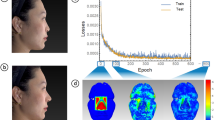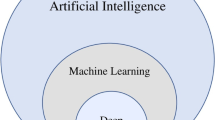Abstract
Background
Rhinoplasty is one of the most popular cosmetic procedures. The complexity of the nasal structure and the substantial aesthetic and functional impact of the operation make rhinoplasty very challenging.
The past few years have witnessed an increasing implementation of artificial intelligence (AI) and simulation systems into plastic surgery practice. This review explores the potential uses of AI and simulation models in rhinoplasty.
Methods
Five electronic databases were searched: PubMed, CINAHL, EMBASE, Scopus, and Web of Science. We used the Preferred Reporting Items for Systematic Reviews and Meta-Analysis as our basis of organization.
Results
Several simulation models were described to predict the nasal shape that aesthetically matches the patient's face, indicate the implant size in augmentation rhinoplasty and construct three-dimensional (3D) facial images from two-dimensional images.
Machine learning was used to learn surgeons' rhinoplasty styles and accurately simulate the outcomes. Deep learning was used to predict rhinoplasty status accurately and analyze the factors associated with increased facial attractiveness after rhinoplasty. Finally, a deep learning model was used to predict patients' age before and after rhinoplasty proving that the procedure made the patients look younger.
Conclusion
3D simulation models and AI models can revolutionalize the practice of functional and aesthetic rhinoplasty. Simulation systems can be beneficial in preoperative planning, intra-operative decision making, and postoperative evaluation. In addition, AI models can be trained to carry out tasks that are either challenging or time-consuming for surgeons.
Level of Evidence III
This journal requires that authors assign a level of evidence to each article. For a full description of these Evidence-Based Medicine ratings, please refer to the Table of Contents or the online Instructions to Authors www.springer.com/00266.




Similar content being viewed by others
Explore related subjects
Discover the latest articles, news and stories from top researchers in related subjects.References
Shashkevich A (2019) Stanford researcher examines earliest concepts of artificial intelligence, robots in ancient myths. https://news.stanford.edu/2019/02/28/ancient-myths-reveal-early-fantasies-artificial-life/
Turing AM (2009) Computing machinery and intelligence. Springer, Parsing the turing test, pp 23–65
McCarthy J (2007) What is artificial intelligence?
Dushkin RV (2022) Towards AGI: cognitive architecture based on hybrid and bionic principles. Lect Notes Netw Syst 2832022:337–345
Jarvis T, Thornburg D, Rebecca AM, Teven CM (2020) Artificial intelligence in plastic surgery: current applications, future directions, and ethical implications. Plast Reconstr Surg Global Open 8(10):e3200
IBM Cloud Education (2020) Machine Learning. https://www.ibm.com/cloud/learn/machine-learning
IBM Cloud Education (2020) Neural Networks. https://www.ibm.com/cloud/learn/neural-networks.
IBM Cloud Education (2020) Natural Language Processing (NLP). https://www.ibm.com/cloud/learn/natural-language-processing.
Martinez AM (2009) Face recognition, overview. In: Li SZ, Jain A (eds) Encyclopedia of Biometrics. Springer, Boston, pp 355–359
Bruce G, Buchanan EHS (1984) Rule-based expert systems: the MYCIN experiments of the stanford heuristic programming project. Addison Wesley, Reading, p 1984
Deo RC (2015) Machine learning in medicine. Circulation 132(20):1920–1930
Noorbakhsh-Sabet N, Zand R, Zhang Y, Abedi V (2019) Artificial intelligence transforms the future of health care. Am J Med 132(7):795–801
Mehta N, Devarakonda MV (2018) Machine learning, natural language programming, and electronic health records: The next step in the artificial intelligence journey? J Allergy Clin Immunol 141(6):2019-2021.e2011
Savova GK, Masanz JJ, Ogren PV et al (2010) Mayo clinical Text analysis and knowledge extraction system (cTAKES): architecture, component evaluation and applications. J Am Med Inform Assoc 17(5):507–513
Dorfman R, Chang I, Saadat S, Roostaeian J (2020) Making the subjective objective: machine learning and rhinoplasty. Aesthet Surg J 40(5):493–498
Zuo KJ, Saun TJ, Forrest CR (2019) Facial recognition technology: a primer for plastic surgeons. Plast Reconstr Surg 143(6):1298e–1306e
Chen K, Lu SM, Cheng R et al (2020) Facial recognition neural networks confirm success of facial feminization surgery. Plast Reconstr Surg 145(1):203–209
Yeong EK, Hsiao TC, Chiang HK, Lin CW (2005) Prediction of burn healing time using artificial neural networks and reflectance spectrometer. Burns J Int Soc Burn Inj 31(4):415–420
Hidaka T, Kurita M, Ogawa K, Tomioka Y, Okazaki M (2020) Application of artificial intelligence for real-time facial asymmetry analysis. Plast Reconstr Surg 146(2):243e–245e
Greene JJ, Tavares J, Guarin DL, Hadlock T (2019) Clinician and Automated assessments of facial function following eyelid weight placement. JAMA Facial Plast Surg 21(5):387–392
Han SS, Moon IJ, Lim W et al (2020) Keratinocytic skin cancer detection on the face using region-based convolutional neural network. JAMA Dermatol 156(1):29–37
Fichman M PBI. (2021) Rhinoplasty. StatPearls [Internet]
Fedok FG (2016) Primary rhinoplasty. Facial Plast Surg Clin North Am 24(3):323–335
Liberati A, Altman DG, Tetzlaff J et al (2009) The PRISMA statement for reporting systematic reviews and meta-analyses of studies that evaluate healthcare interventions: explanation and elaboration. BMJ 339:b2700–b2700. https://doi.org/10.1136/bmj.b2700
Gao J, Zhou M, Wang H, Zhang C (2001) Three dimensional surface warping for plastic surgery planning [Paper presentation] at: In: Proceedings of the ieee international conference on systems, man and cybernetics; 7-10 October 2001; Tucson, AZ, USA
Xie K, Yang J, Zhu YM (2007) Fast collision detection based on nose augmentation virtual surgery. Comput Methods Progr Biomed 88(1):1–7
Wang JX, Liao SH, Zhu XH et al (2011) Real time 3D simulation for nose surgery and automatic individual prosthesis design. Comput Methods Progr Biomed 104(3):472–479
Choi YD, Kim Y, Park E (2017) Patient-specific augmentation rhinoplasty using a three-dimensional simulation program and three-dimensional printing. Aesthet Surg J 37(9):988–998
Yi HG, Choi YJ, Jung JW et al (2019) Three-dimensional printing of a patient-specific engineered nasal cartilage for augmentative rhinoplasty. J Tissue Eng 10:204173141882479. https://doi.org/10.1177/2041731418824797
Bottino A, De Simone M, Laurentini A, Sforza C (2012) A new 3-D tool for planning plastic surgery. IEEE Trans Biomed Eng 59(12):3439–3449
Codazzi D, Bruschi S, Mazzola RF et al (2016) Bergamo 3D rhinoplasty software: select, store, and share surgical maneuvers in a three-dimensional nasal model. Plast Reconstr Surg 137(2):313e–317e
Jianfeng L, Shenghui L, Rongbo L, Juan T, Xiong L, Beiji Z (2016) Realistic cosmetic plastic surgery simulation based on the golden ratio. Chin J Electron 25(5):886–891
Liu Y, Johnson MR, Matida EA, Kherani S, Marsan J (2009) Creation of a standardized geometry of the human nasal cavity. J Appl Physiol 106(3):784–795
Fishman Z, Liu J, Pope J, Fialkov JA, Whyne CM (2021) Validating 3D face morphing towards improving pre-operative planning in facial reconstruction surgery. Comput Methods Biomech Biomed Eng Imaging Vis 9(5):480–487
Shikara M, Rizzi CJ, Zelip B et al (2018) Assessment of a novel computer algorithm for printing a 3-Dimensional Nasal Prosthetic. JAMA Otolaryngol Head Neck Surg 144(7):557–563
Ercan I, Etoz A, Guney I et al (2007) Statistical shape analysis of nose in Turkish young adults. J Craniofac Surg 18(1):219–224
Barnes CH, Chen H, Chen JJ, Su E, Moy WJ, Wong BJF (2018) Quantitative analysis and classification of the nasal base using a parametric model. JAMA Facial Plast Surg 20(2):160–165
Zhukhovitskaya A, Cragun D, Su E, Barnes CH, Wong BJF (2019) Categorization and analysis of nasal base shapes using a parametric model. JAMA Facial Plast Surg 21(5):440–445
Oliveira-Santos T, Baumberger C, Constantinescu M et al (2013) 3D face reconstruction from 2D pictures: first results of a web-based computer aided system for aesthetic procedures. Ann Biomed Eng 41(5):952–966
Zeng W, Chen G, Ju R, Yin H, Tian W, Tang W (2018) The Combined application of database and three-dimensional image registration technology in the restoration of total nose defect. J Craniofac Surg 29(5):e484–e487
Rezaei F, Omrani MR, Abnavi F et al (2015) Computerized analysis of acoustic characteristics of patients with internal nasal valve collapse before and after functional rhinoplasty. J Med Signals Sens 5(4):210–219
Chinsk H, Lerch R, Tournour D, Chinski L, Caruso D (2021) An artificial intelligence tool for image simulation in rhinoplasty. Facial Plast Surg. https://doi.org/10.1055/s-0041-1729911
Štěpánek L, Kasal P, Měšťák J (2020) Machine-learning and R in plastic surgery: evaluation of facial attractiveness and classification of facial emotions. In: Świątek J, Borzemski L, Wilimowska Z (eds) Information systems architecture and technology: proceedings of 40th anniversary international conference on information systems architecture and technology: ISAT 2019: Part II. Springer International Publishing, Cham, pp 243–252. https://doi.org/10.1007/978-3-030-30604-5_22
Stepanek L, Kasal P, Mestak J. (2018) Evaluation of facial attractiveness for purposes of plastic surgery using machine-learning methods and image analysis [Paper presentation] at: IEEE 20th International Conference on e-Health Networking, Applications and Services, Healthcom; 17-20 September 2018; Ostrava, Czech Republic
Borsting E, DeSimone R, Ascha M, Ascha M (2020) Applied deep learning in plastic surgery: classifying rhinoplasty with a mobile app. J Craniofac Surg 31(1):102–106
Constantian MB (1987) Interactive computer graphics: a new technology to improve judgment in rhinoplasty. Clin Plast Surg 14(4):623–630
Lee TY, Lin CH, Lin HY (2001) Computer-aided prototype system for nose surgery. IEEE Trans Inf Technol Biomed 5(4):271–278
Szychta P, Witmanowski H, Rykala J (2013) Assessment of the usefulness of three-dimensional scanner in aesthetic evaluation of post-traumatic rhinoplasty. J Plast Surg Hand Surg 47(2):106–112
East C, Kwame I, Hannan SA (2016) Revision rhinoplasty: what can we learn from error patterns? An analysis of revision surgery. Facial Plast Surg 32(4):409–415
Neaman KC, Boettcher AK, Do VH et al (2013) Cosmetic rhinoplasty: revision rates revisited. Aesthet Surg J 33(1):31–37
Kiranantawat K, Sitpahul N, Taeprasartsit P et al (2014) The first smartphone application for microsurgery monitoring: silparamanitor. Plast Reconstr Surg 134(1):130–139
Conforth M, Meng Y, Valmikinathan C, Yu X (2009) Nerve graft selection for peripheral nerve regeneration using neural networks trained by a hybrid ACO/PSO method [Paper presentation] at: 2009 IEEE Symposium on Computational Intelligence in Bioinformatics and Computational Biology; March 30- April 2, 2009; Nashville, TN, USA
PauliinaHomsy S, Uimonen MM, Lindford AJ, Repo JP, Lassus PA (2021) Application of the FACE-Q rhinoplasty module in a mixed reconstructive and corrective rhinoplasty population in Finland. J Plast Surg Hand Surg 55(6):373–379. https://doi.org/10.1080/2000656X.2021.1898973
Funding
This study was supported in part by the Mayo Clinic Center for Regenerative Medicine.
Author information
Authors and Affiliations
Corresponding author
Ethics declarations
Conflict of interest
The authors declare that they have no conflicts of interest to disclose.
Human or animal rights
This article does not contain any studies with human participants or animals performed by any of the authors.
Informed consent
For this type of study, informed consent is not required.
Additional information
Publisher's Note
Springer Nature remains neutral with regard to jurisdictional claims in published maps and institutional affiliations.
Rights and permissions
About this article
Cite this article
Eldaly, A.S., Avila, F.R., Torres-Guzman, R.A. et al. Simulation and Artificial Intelligence in Rhinoplasty: A Systematic Review. Aesth Plast Surg 46, 2368–2377 (2022). https://doi.org/10.1007/s00266-022-02883-x
Received:
Accepted:
Published:
Issue Date:
DOI: https://doi.org/10.1007/s00266-022-02883-x




